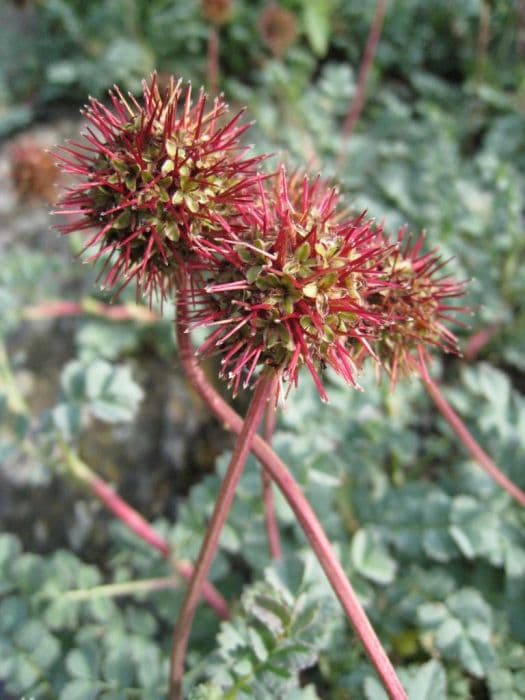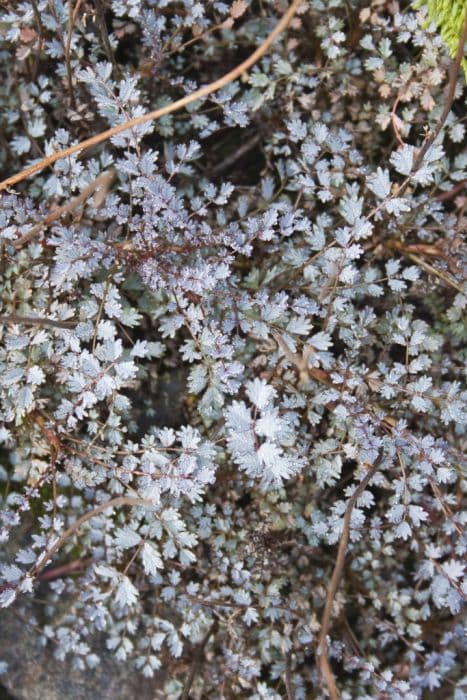Newton Wonder Apple Malus domestica 'Newton Wonder' (C)

ABOUT
The Newton Wonder apple tree is known for producing large, attractive fruits that have a broad and flat shape. These apples usually have a greenish-yellow background color, but as they mature, they develop red streaks and flushing over a large portion of their skin, giving them a classic apple appearance. The skin can have a slightly rough texture, and beneath it, you'll find creamy white flesh that is firm and juicy. The leaves of the Newton Wonder apple tree are typical of most apple tree varieties with a bright and lush green color. The foliage is oval in shape with a pointed end and edges that are finely toothed. These leaves grow along the branches in an alternating pattern, providing a thick canopy of green during the growing season. In the spring, the Newton Wonder apple tree puts on a beautiful display of blossoms. These flowers are white with a blush of pink, showing in clusters against the backdrop of the emerging leaves. The blooms can attract pollinators such as bees, which are essential for fruit development. The branching structure of the Newton Wonder apple tree is sturdy and spreading, forming a robust framework that supports the weight of its fruit. The bark of the tree is a typical gray-brown and has a rough texture, which becomes more furrowed and gnarly as the tree ages. Overall, the visual appearance of the Newton Wonder apple tree is that of a classic, picturesque fruit tree that not only provides delicious fruits but also adds beauty to the landscape with its seasonal changes, from the delicate spring blossoms to the full, leafy canopy in summer and the heavy-laden branches of apples in early autumn.
About this plant
 Names
NamesFamily
Rosaceae.
Synonyms
Newton Wonder Apple.
Common names
Malus domestica 'Newton Wonder'.
 Toxicity
ToxicityTo humans
Apple (Malus domestica 'Newton Wonder') is not generally considered toxic to humans when eaten as fruit. However, the seeds of the apple contain amygdalin, which can release cyanide when digested. Ingesting a small number of apple seeds is unlikely to cause harm because the human body can detoxify small amounts of cyanide. However, consuming a large quantity of seeds could potentially lead to cyanide poisoning, whose symptoms may include headache, dizziness, shortness of breath, and in extreme cases, seizures or loss of consciousness. It is essential to avoid eating apple seeds in significant amounts.
To pets
Apple (Malus domestica 'Newton Wonder') is not toxic to pets when given as flesh without the core and seeds. However, the seeds contain amygdalin, releasing cyanide when digested, which can be toxic. If a pet ingests significant amounts of apple seeds, it could potentially result in cyanide poisoning. The symptoms of cyanide poisoning in pets may include dilated pupils, difficulty breathing, hyperventilation, shock, and in severe cases, seizures or coma. It's important to remove the seeds before giving apples to pets and to feed only in moderation.
 Characteristics
CharacteristicsLife cycle
Perennials
Foliage type
Deciduous
Color of leaves
Green
Flower color
White
Height
10-20 feet (3-6 meters)
Spread
10-15 feet (3-4.5 meters)
Plant type
Tree
Hardiness zones
5
Native area
Asia
Benefits
 General Benefits
General Benefits- Ornamental Appeal: Offers visual interest with its abundant white to pink blossoms in spring and attractive foliage.
- Fruit Production: Yields large, edible apples commonly used in cooking and baking, providing a source of food and nutrition.
- Habitat for Wildlife: Provides food and shelter for various species of birds and beneficial insects.
- Shade and Shelter: Can act as a natural sunshade and windbreak, increasing outdoor comfort and reducing energy costs for nearby buildings.
- Carbon Sequestration: Like all trees, it absorbs carbon dioxide, helping to reduce the impact of climate change.
- Soil Enhancement: Contributes to soil health through leaf litter, which decomposes and adds organic matter to the soil.
- Educational Value: Offers opportunities for learning about fruit cultivation, pollination, and the lifecycle of trees.
 Medical Properties
Medical Properties- This plant is not used for medical purposes.
 Air-purifying Qualities
Air-purifying QualitiesThis plant is not specifically known for air purifying qualities.
 Other Uses
Other Uses- Webbing between young branches can act as natural bird feeders when filled with seeds and suet to attract bird species into gardens.
- Tree bark can be used in craft projects, such as making rustic plant labels or textural elements in bark painting.
- Fallen leaves from the apple tree provide habitat for beneficial garden insects like ground beetles and worms that aid in soil health.
- Branch clippings can be repurposed as supports for climbing plants or as part of a homemade trellis structure.
- Unripe apples can be used to create natural pectin, which is essential for homemade jam and jelly setting.
- Apple wood chips are highly valued for smoking meats, imparting a sweet and fruity flavor to barbecued foods.
- The dense wood from pruning can be turned into woodworking projects, including turning small bowls or crafting tool handles.
- Dried apple peels can be added to homemade potpourri mixes for a pleasant, natural fragrance in the home.
- Apple pomace, the leftover material from juicing, can be composted or used directly in the garden as mulch to enrich the soil.
- Cut apples can be used in creative arts for stamping patterns, serving as an eco-friendly and biodegradable tool for crafts.
Interesting Facts
 Feng Shui
Feng ShuiThe apple tree is not used in Feng Shui practice.
 Zodiac Sign Compitability
Zodiac Sign CompitabilityThe apple tree is not used in astrology practice.
 Plant Symbolism
Plant Symbolism- Knowledge - The apple, being the fruit from Malus domestica, is often associated with knowledge and enlightenment, as depicted in the biblical story of Adam and Eve in the Garden of Eden.
- Forbidden Desires - Apples have been symbolic of temptation and desire, again stemming from the story of Adam and Eve where the apple represents the forbidden fruit.
- Immortality - In Greek mythology, apples are associated with immortality and eternal youth, often connected to the golden apples in the Garden of the Hesperides.
- Love and Beauty - Due to its sweet taste and pleasing appearance, the apple has also been used to symbolize love and beauty in various folk tales and myths.
- Fertility and Abundance - Apples are fruitful and bear many seeds, making them symbols of fertility and abundance throughout various cultures.
 Water
WaterThe apple tree, commonly known as Newton Wonder, prefers deep, infrequent watering to encourage strong root growth. It should be watered once a week with about 15-20 gallons of water during the growing season, but this may need to be increased during periods of hot, dry weather. During the winter, watering can be reduced, and the natural rainfall may be sufficient. It's important to avoid waterlogging, so ensure good drainage and adjust watering based on soil moisture levels. Overhead watering is not recommended as it can lead to fungal diseases; instead, apply water directly to the base of the tree.
 Light
LightNewton Wonder apple trees require full sun to produce the best fruit. They should receive at least 6 hours of direct sunlight each day. Choosing a spot that gets unobstructed sunlight throughout the day will ensure the tree has the energy necessary for robust growth and a plentiful harvest. Avoid planting in shaded areas where the tree would be deprived of essential sunlight.
 Temperature
TemperatureFor apple trees like the Newton Wonder, the ideal temperature range for active growth is between 60 and 75 degrees Fahrenheit. They can survive winter temperatures as low as -30 degrees Fahrenheit, but flowers and fruit can be damaged by spring frosts if temperatures drop below 28 degrees Fahrenheit. Planting in a location that avoids low spots where cold air settles can help minimize frost damage during critical growth periods.
 Pruning
PruningPruning is essential for Newton Wonder apple trees to maintain health, encourage fruit production, and facilitate air circulation. Pruning should be done during the dormant season, typically late winter or early spring before new growth starts. Remove dead, diseased, or crossing branches, and thin out the canopy to allow light penetration. Pruning is also used to shape the tree and control its size; annual pruning will ensure the best yield.
 Cleaning
CleaningAs needed
 Soil
SoilApple trees like the 'Newton Wonder' variety thrive best in a well-draining loam soil that is rich in organic matter. The ideal soil pH range for this apple tree is between 6.0 and 7.0. To create the best soil mix, incorporate compost and aged manure to improve fertility and drainage. Mulching around the base of the tree can help retain moisture and suppress weeds.
 Repotting
Repotting'Newton Wonder' apple trees, being large fruit trees, are not typically grown in containers and therefore do not require repotting. They are planted directly into the ground where they will grow for many years without the need for repotting.
 Humidity & Misting
Humidity & Misting'Newton Wonder' apple trees, like most apple varieties, do well in average outdoor humidity levels. They are quite resilient and can adjust to local conditions as long as they are not extreme. There is no specific humidity level required, as these trees adapt to the natural outdoor humidity in the regions where they are typically grown.
 Suitable locations
Suitable locationsIndoor
Not suitable; apple trees need outdoor space for growth and sun.
Outdoor
Plant in sun, amend soil with compost, and provide ample water.
Hardiness zone
4-8 USDA
 Life cycle
Life cycle'Newton Wonder', commonly known as the Newton Wonder apple, begins its life as a seed which, when planted in fertile soil and given the right conditions, will germinate and sprout into a seedling. The seedling then grows into a young tree, undergoing a period of vegetative growth where it develops a root system, stems, and leaves. As it matures, the apple tree enters the reproductive phase, producing blossoms that are pollinated by bees or other insects, leading to fruit set. The apples develop over the growing season, with 'Newton Wonder' typically ripening in late autumn. After harvesting, the tree enters a period of dormancy during the cold winter months. Each year, the cycle repeats with new blossoms and fruit, continuing for many years as the tree can live and bear fruit for several decades under proper care.
 Propogation
PropogationPropogation time
Late winter
The Malus domestica 'Newton Wonder', commonly known as the 'Newton Wonder' apple, is typically propagated by grafting, which is the most popular method due to its ability to preserve the genetic identity of this cultivar. Grafting involves joining a piece of the 'Newton Wonder' cultivar, known as a scion, which contains the desired buds, to a rootstock that provides the root system. This process is often carried out during the dormant season, usually in late winter or early spring. The scion, which is usually about 6 to 8 inches (15 to 20 centimeters) long, is cut at a diagonal angle and joined to a corresponding cut on the rootstock. The cuts are then bound with grafting tape and sealed with grafting wax to prevent desiccation and to ensure a successful union. After the graft has taken, generally within a few weeks, the new plant will begin to grow, combining the traits of the 'Newton Wonder' apple with the hardiness and adaptability of the selected rootstock.









